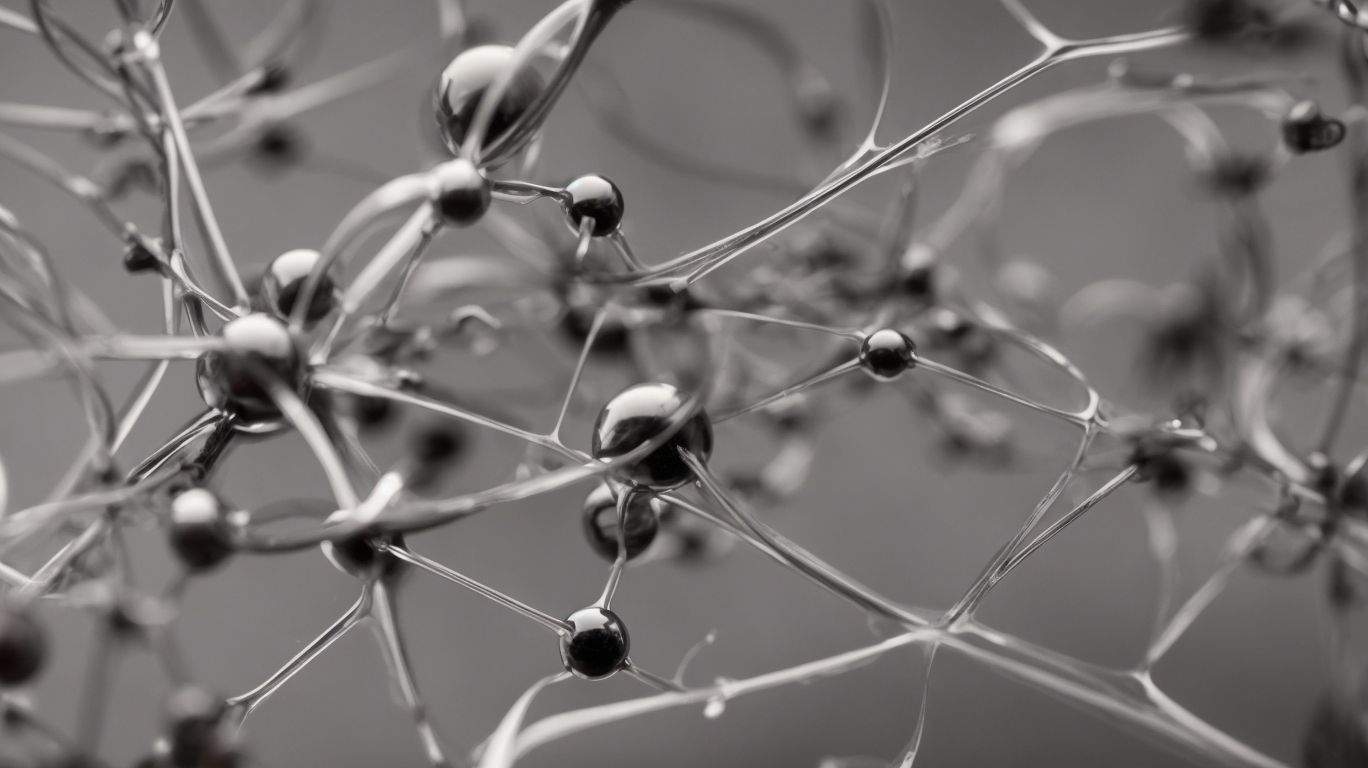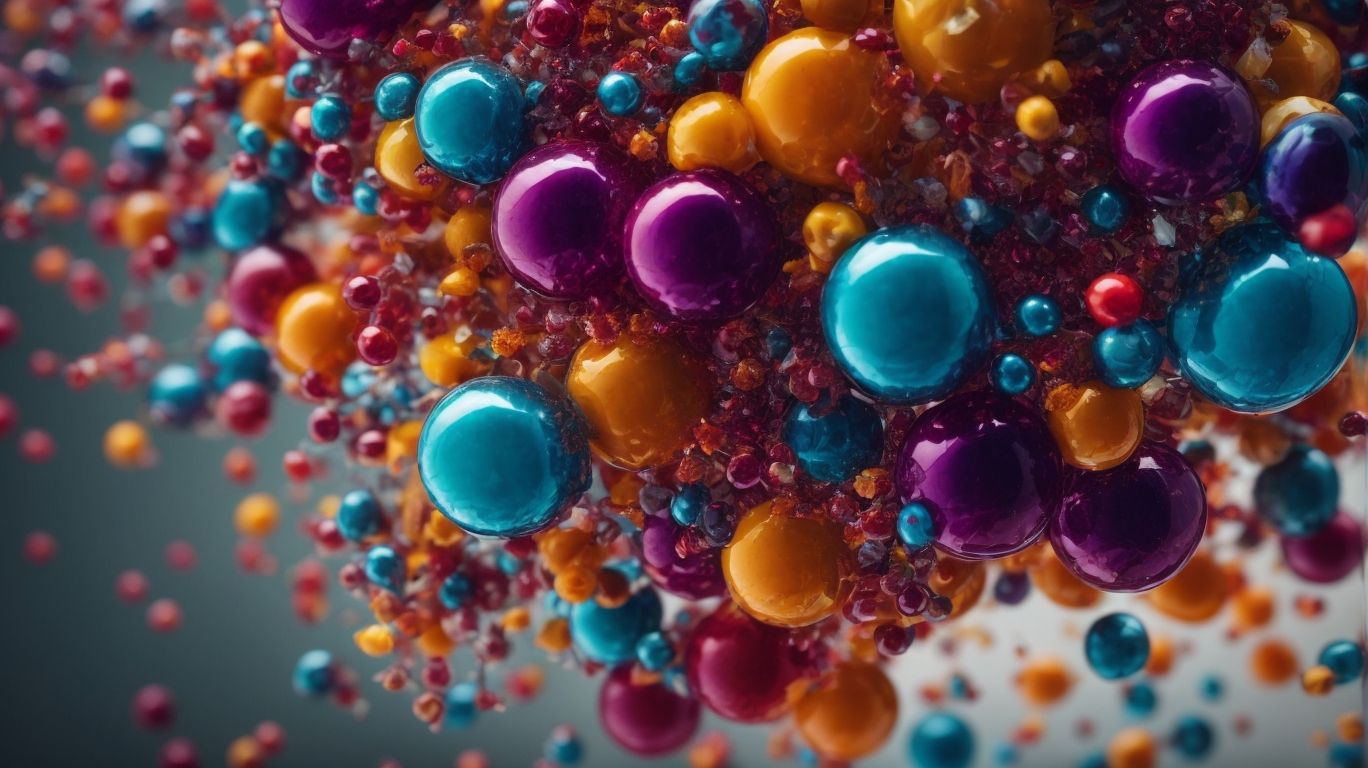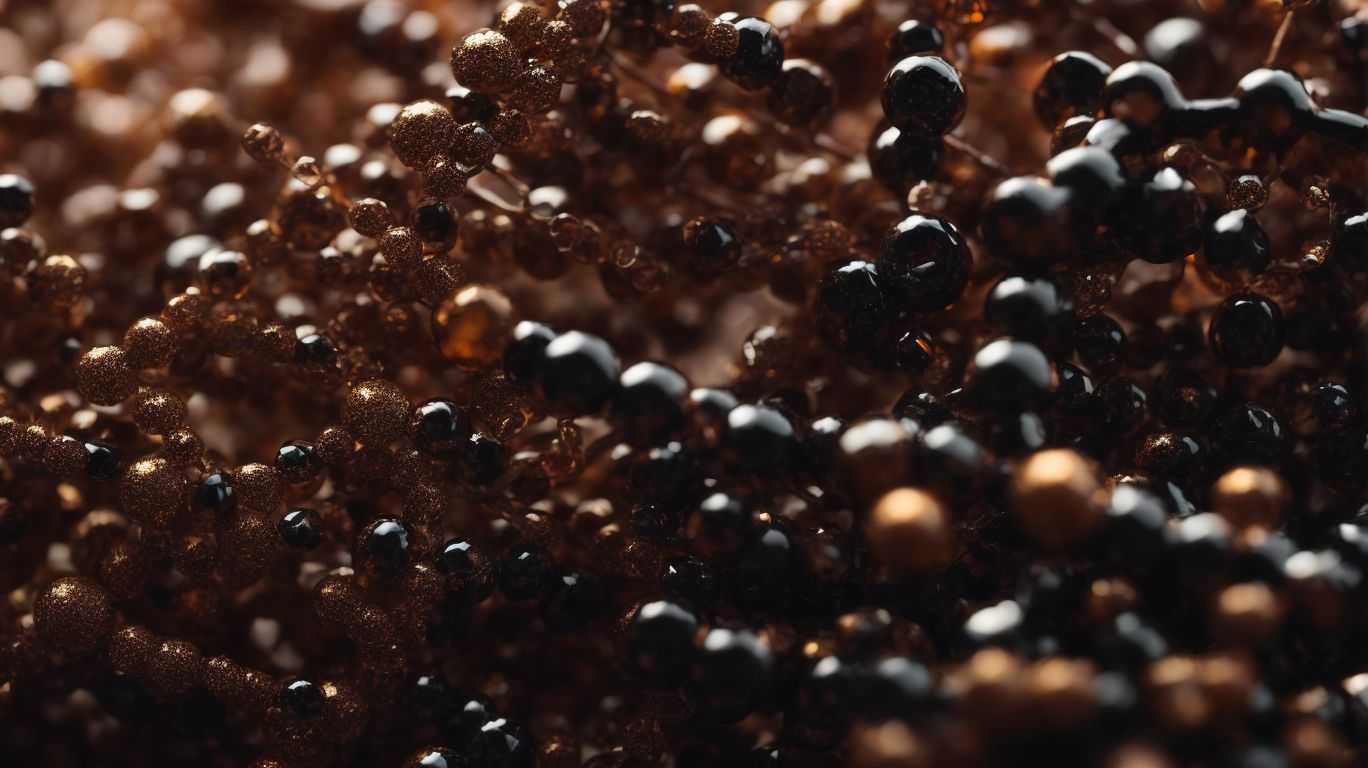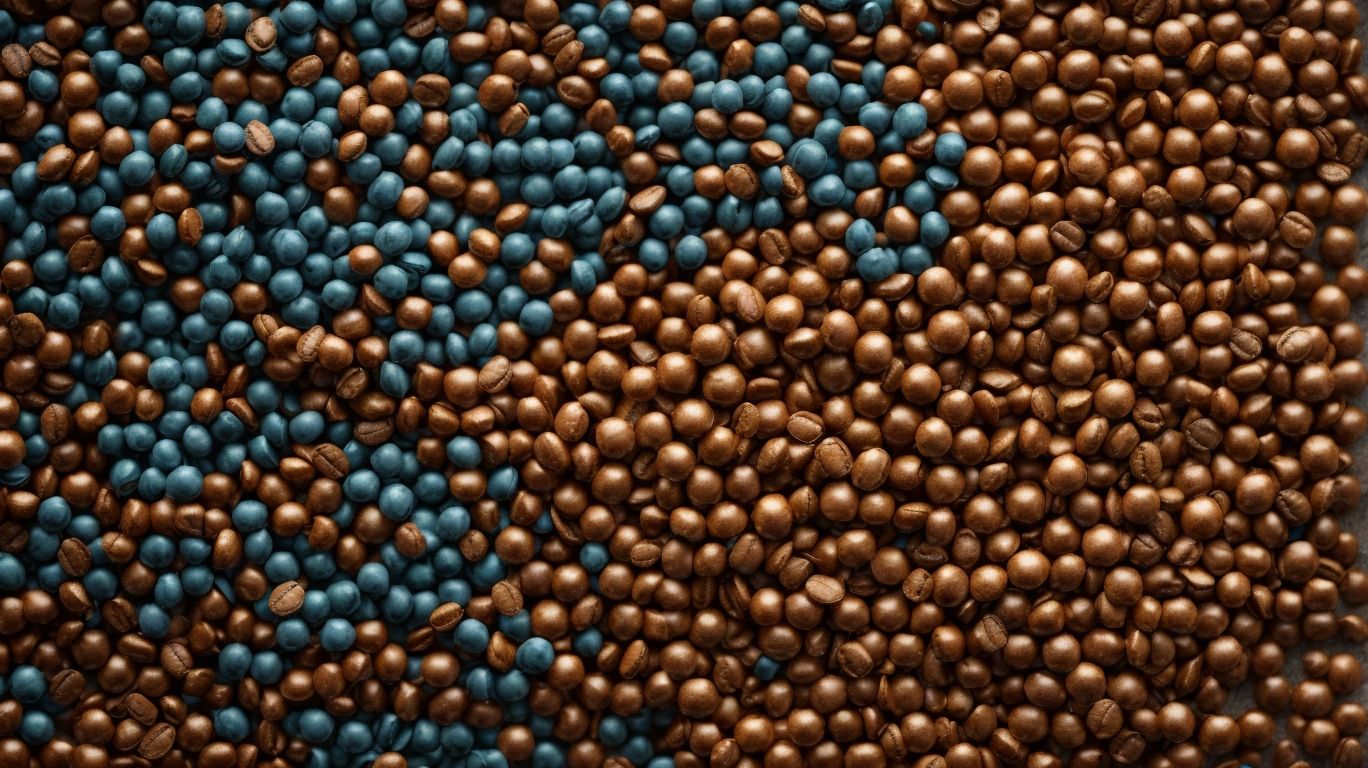Caffeine is a naturally occurring chemical compound that is commonly found in coffee, tea, and cacao plants. It is well-known for its stimulating effects on the human body, making it a staple in many people’s daily routines. However, the chemical structure of caffeine is not as widely understood. In this article, we will explore the fascinating chemistry behind caffeine and its effects on the body.
The chemical structure of caffeine is composed of three elements: carbon, hydrogen, and nitrogen. Its molecular formula is C8H10N4O2, and it has a molecular weight of 194.19 g/mol. The chemical bonds in caffeine are arranged in a ring structure, with nitrogen atoms forming a double bond with carbon atoms. This arrangement contributes to caffeine’s unique properties and effects.
When consumed, caffeine enters the body and travels to the brain, where it blocks the effects of a neurotransmitter called adenosine. Adenosine is responsible for promoting relaxation and sleep, so caffeine’s inhibitory effects result in increased alertness and energy. Additionally, caffeine also affects other neurotransmitters such as dopamine, which can lead to improved mood and concentration.
Caffeine is found in various natural sources such as coffee beans, tea leaves, and cacao plants. It can also be artificially produced and added to certain products, such as energy drinks and supplements. The extraction process for caffeine involves soaking the plant material in a solvent to separate the caffeine molecules. On a larger scale, caffeine can also be produced synthetically using chemical reactions.
The effects of caffeine on the body can vary from person to person, but it is generally known to have stimulant effects on the central nervous system. It can increase heart rate and blood pressure, improve alertness and cognitive function, and provide a temporary energy boost. However, consuming too much caffeine may lead to side effects such as anxiety, insomnia, and heart palpitations. It is essential to consume caffeine in moderation and be aware of its potential risks.
In conclusion, caffeine’s chemical structure and effects on the body make it a fascinating compound to explore. From its molecular arrangement to its effects on neurotransmitters, caffeine plays a significant role in our daily lives. By understanding the chemistry behind caffeine, we can make informed choices about our caffeine consumption and its potential impacts on our health.
Key Takeaways:
What is Caffeine?

Photo Credits: Chemicalglossary.Net by Eric Martinez
Caffeine is a natural stimulant found in various plants such as coffee beans, tea leaves, and cacao pods. It is classified as a xanthine and acts as a stimulant for the central nervous system. When ingested, caffeine blocks adenosine receptors in the brain, resulting in increased alertness and reduced drowsiness. It is a popularly consumed substance globally and is renowned for its ability to enhance focus and performance. Throughout history, caffeine has been utilized for centuries for its stimulating effects, with its earliest recorded use dating back to ancient civilizations in East Africa.
The Chemical Structure of Caffeine

Photo Credits: Chemicalglossary.Net by Roy Martinez
Caffeine, a stimulant commonly found in coffee, tea, and other beverages and foods, has a unique chemical structure consisting of carbon, hydrogen, and nitrogen atoms. This structure, which includes two aromatic rings connected by various functional groups, is crucial in determining the effects of caffeine on the body. By understanding the chemical structure of caffeine, we can better comprehend its ability to block adenosine receptors, increase alertness, and combat fatigue. The specific arrangement of atoms in the caffeine molecule plays a significant role in its distinct properties and impact on the human body.
What are the Chemical Elements in Caffeine?
Caffeine is composed of carbon, hydrogen, nitrogen, and oxygen atoms arranged in a specific chemical structure. These elements give caffeine its stimulating properties, with carbon serving as the primary element and forming the backbone of the molecule. Hydrogen and oxygen are also crucial for bonding and determining the overall shape of the molecule. Nitrogen plays a significant role in caffeine’s ability to interact with receptors in the brain, promoting alertness and reducing fatigue. Knowing the chemical elements present in caffeine can help explain its effects on the body and why it is a popularly consumed substance.
How are the Chemical Bonds Arranged in Caffeine?
The specific arrangement of chemical bonds in caffeine gives it its unique structure. Here is a breakdown of the step-by-step process of how these bonds are formed:
- Caffeine consists of three carbon atoms, ten hydrogen atoms, four nitrogen atoms, and two oxygen atoms.
- The carbon atoms are bonded together in a ring structure known as an aromatic ring.
- Each carbon atom in the ring is connected to other atoms through single and double bonds.
- Nitrogen atoms are bonded to carbon atoms in the ring, with one nitrogen atom forming a double bond with a carbon atom.
- Oxygen atoms are bonded to carbon and nitrogen atoms in the ring structure.
- These bonds create a complex structure that gives caffeine its stimulating effects on the body.
Understanding the arrangement of chemical bonds in caffeine allows us to appreciate its fascinating chemistry and how it affects our bodies.
How Does Caffeine Work in the Body?

Photo Credits: Chemicalglossary.Net by Jose Thomas
Caffeine works in the body by stimulating the central nervous system, blocking adenosine receptors, and increasing the release of neurotransmitters like dopamine and norepinephrine. This leads to increased alertness, improved focus, and reduced fatigue.
Here are the steps that explain how caffeine works in the body:
- Consumption: Caffeine is consumed through beverages like coffee, tea, and energy drinks.
- Absorption: Once consumed, caffeine is rapidly absorbed into the bloodstream through the stomach and small intestine.
- Transportation: It is then transported to the brain, where it exerts its effects.
- Stimulation: Caffeine blocks adenosine receptors, preventing adenosine from binding and promoting wakefulness.
- Neurotransmitter release: It increases the release of dopamine, promoting a sense of pleasure and reward, and norepinephrine, enhancing alertness.
What is the Role of Adenosine in Caffeine’s Effects?
Adenosine plays a crucial role in the effects of caffeine on the body. Acting as a neurotransmitter, adenosine promotes sleep and relaxation by binding to adenosine receptors in the brain. However, when caffeine is consumed, it blocks these receptors, preventing adenosine from binding to them. This leads to increased alertness and wakefulness, as other neurotransmitters like dopamine and norepinephrine can function more freely without adenosine’s inhibitory effects.
Understanding the role of adenosine helps to explain why caffeine is known for its stimulant effects.
The discovery of caffeine dates back to ancient times, with its use in beverages recorded as far back as the 9th century in Ethiopia. However, it wasn’t until the 19th century that caffeine was isolated and identified as the active compound in coffee. Since then, its effects on adenosine receptors have been extensively studied, providing insights into its role in promoting alertness and wakefulness. Today, caffeine is a widely consumed substance found in various beverages and foods, appreciated for its ability to boost energy and enhance focus.
How Does Caffeine Affect Neurotransmitters in the Brain?
Caffeine has various mechanisms of impacting neurotransmitters in the brain. Here are the steps of how caffeine affects neurotransmitters:
- Caffeine binds to adenosine receptors in the brain, preventing the inhibitory effects of adenosine.
- This binding leads to increased release of neurotransmitters such as dopamine, norepinephrine, and serotonin.
- Dopamine, a neurotransmitter associated with pleasure and reward, is increased, resulting in improved mood and heightened alertness.
- Norepinephrine, a neurotransmitter involved in the body’s stress response, is also increased, leading to increased arousal and focus.
- Serotonin, a neurotransmitter involved in regulating mood, sleep, and appetite, is also affected by caffeine, although the exact mechanism is not fully understood.
These effects on neurotransmitters contribute to the stimulating effects of caffeine on the brain and body.
What are the Sources of Caffeine?

Photo Credits: Chemicalglossary.Net by Ryan White
Caffeine is a naturally-occurring compound that can be found in various sources. The most well-known source is coffee beans, but it can also be found in tea leaves, cacao beans (used for making chocolate), and kola nuts (used in certain soft drinks). Additionally, caffeine can be found in energy drinks, certain medications, and some types of soda. In smaller quantities, it can also be found in certain fruits and plants. Interestingly, caffeine serves as a natural pesticide for plants, helping to protect them from insects.
What are the Natural Sources of Caffeine?
Some natural sources of caffeine include coffee beans, tea leaves, cacao beans, and kola nuts. These sources contain compounds that naturally contain caffeine, such as theobromine in cacao and theophylline in tea. Other natural sources of caffeine include yerba mate, guarana berries, and certain types of mushrooms. These sources provide varying amounts of caffeine, with coffee being one of the highest sources. It’s important to note, however, that the caffeine content can vary depending on factors such as the type of bean or leaf, the brewing method, and the serving size.
What are the Artificial Sources of Caffeine?
Artificial sources of caffeine are abundant and can be found in various everyday products. These sources include energy drinks, sodas, and certain medications such as pain relievers and weight-loss supplements. Additionally, caffeine is often added to chocolate, tea, and some flavored waters. It is important to be mindful of these sources and consume them in moderation, as excessive intake of caffeine can result in negative side effects such as increased heart rate, anxiety, and difficulty sleeping.
A helpful tip: When seeking caffeine-free alternatives, consider herbal teas or decaffeinated versions of your preferred beverages.
How is Caffeine Processed and Produced?

Photo Credits: Chemicalglossary.Net by Christopher Moore
Caffeine is typically produced through a series of steps involving extraction, purification, and drying. Here is a breakdown of the process used to produce caffeine:
- Extraction: Caffeine is extracted from natural sources such as coffee beans or tea leaves using methods like solvent extraction or supercritical fluid extraction.
- Purification: The extracted caffeine is then purified using techniques like steam distillation or sublimation to eliminate impurities and obtain a pure form of caffeine.
- Drying: The purified caffeine is dried to eliminate any remaining moisture and obtain a dry powder or crystal form of caffeine.
Pro-tip: If you prefer a milder cup of coffee or tea, try using a coarser grind or longer steeping time to extract less caffeine.
What is the Extraction Process for Caffeine?
The process of extracting caffeine typically involves the following steps:
- Harvesting: Caffeine is extracted from natural sources such as coffee beans or tea leaves.
- Drying: The harvested plants are dried to remove moisture.
- Grinding: The dried plants are then ground into a fine powder.
- Extraction: The powdered plants are combined with a solvent, typically water or a combination of water and organic solvents, to extract the caffeine from the plant material.
- Filtration: The mixture is filtered to remove any solid particles.
- Concentration: The caffeine solution is concentrated by removing the solvent through evaporation or other methods.
- Purification: The concentrated solution undergoes further purification to remove impurities.
- Drying: The purified caffeine is dried to obtain the final powdered form.
This extraction process allows for the isolation of caffeine, which can then be used in various products such as beverages, energy drinks, and medications.
How is Caffeine Produced on a Large Scale?
On a large scale, caffeine is produced through a multi-step process that involves the following steps:
- Extraction: Caffeine is extracted from raw materials such as coffee beans or tea leaves using solvents like water or organic compounds.
- Purification: The extracted caffeine undergoes a purification process to remove impurities and unwanted compounds.
- Crystallization: The purified caffeine is then crystallized by cooling the solution, causing the caffeine molecules to form solid crystals.
- Drying: The caffeine crystals are dried to eliminate any remaining moisture.
- Grinding: Finally, the dried caffeine crystals are ground into a fine powder, ready for use in various products.
Fact: The worldwide production of caffeine is estimated to be around 120,000 tons per year, with the majority of it being used in the production of coffee and tea.
What are the Effects of Caffeine on the Body?

Photo Credits: Chemicalglossary.Net by Steven Scott
Caffeine has a variety of effects on the body, including heightened alertness, improved focus, and enhanced physical performance. By stimulating the central nervous system and blocking adenosine receptors, it prevents drowsiness and leads to increased heart rate and blood pressure. Additionally, caffeine stimulates the release of dopamine, a neurotransmitter linked to pleasure and reward.
However, excessive consumption can result in side effects such as restlessness, anxiety, and difficulty sleeping. It is crucial to consume caffeine in moderation and be aware of its impact on the body.
How Does Caffeine Affect the Central Nervous System?
Caffeine has various effects on the central nervous system, including:
- Blocking adenosine receptors, which decreases drowsiness and increases alertness.
- Increasing dopamine production, resulting in improved mood and a feeling of pleasure.
- Stimulating the release of adrenaline, which raises heart rate and blood pressure.
- Enhancing cognitive function, including improved focus, attention, and reaction time.
- However, high doses of caffeine may cause side effects such as anxiety, restlessness, and insomnia.
Interestingly, the impact of caffeine on the nervous system has been recognized for centuries. The consumption of caffeine dates back to ancient civilizations, where people discovered the stimulating effects of plants containing caffeine, such as coffee and tea. Throughout history, caffeine has been a popular beverage ingredient due to its invigorating properties.
What are the Potential Benefits and Risks of Consuming Caffeine?
There are both benefits and risks associated with consuming caffeine, which can vary based on individual factors. Some potential benefits include:
- Improved alertness
- Increased focus
- Enhanced physical performance
It may also have positive effects on certain medical conditions, such as asthma and migraines. However, it’s important to keep in mind that excessive caffeine consumption can lead to negative effects like:
- Restlessness
- Insomnia
- A higher heart rate
It may also trigger anxiety or worsen existing conditions like high blood pressure. The key is moderation and being aware of one’s personal tolerance levels. Consulting with a healthcare professional can provide personalized advice on the potential benefits and risks of consuming caffeine.
Summary

Photo Credits: Chemicalglossary.Net by Randy Mitchell
Caffeine is a compound with a complex chemistry, belonging to a class of compounds known as xanthines. This compound is an alkaloid and is made up of carbon, hydrogen, nitrogen, and oxygen atoms arranged in a specific manner. It is commonly found in drinks and foods like coffee, tea, and chocolate, and is known to stimulate the central nervous system. Knowing the chemical structure of caffeine is key to understanding its effects on the body and why it is widely used as a pick-me-up.
Frequently Asked Questions
1. What is caffeine and how does it affect the body?
Caffeine is a commonly consumed purine alkaloid found in coffee, tea, energy drinks, and other products. It is able to stimulate the central nervous system, resulting in increased alertness and energy. It does this by blocking the effects of adenosine, a neurotransmitter that promotes relaxation and sleep. However, excess caffeine consumption can lead to negative side effects such as rapid heartbeat and anxiety.
2. What are the average consumption patterns for caffeine in the United States?
According to the American Chemical Society, the average dose of caffeine consumed in the United States is about 300 mg per day, which is equivalent to about 3 cups of coffee. However, individual differences and factors such as age, weight, and overall health can influence how much caffeine a person can safely consume.
3. How does caffeine interact with the body’s protein receptors?
Caffeine is able to bind to and activate adenosine receptors in the brain, resulting in increased activity of dopamine and glutamate, two neurotransmitters associated with pleasure and alertness. This multi directional influence on protein receptors is what contributes to caffeine’s stimulating effects.
4. Can caffeine have positive effects on human health?
Research studies have shown that caffeine may have some therapeutic strategies and healing properties, such as improved cognitive function and anti oxidative properties. However, more data availability and latest discoveries are needed to fully understand caffeine’s potential benefits on disease entities like Parkinson’s disease.
5. What are some commonly consumed caffeine-infused products?
Caffeine can be found in a variety of products including coffee, tea, energy drinks, energy shots like 5-hour Energy, gum like Jolt Energy Gum, snacks like Wired Waffles and Cracker Jack’d, and even beef jerky. Red Bull and Kickstart Fruit Punch are also popular energy-boosting drinks.
6. Can caffeine consumption have negative sides?
Excess caffeine consumption can lead to negative side effects such as disrupted sleep patterns, anxiety, and irritability. The National Sleep Foundation recommends a daily total of 400 mg of caffeine for healthy adults, which is equivalent to about 4 cups of coffee. It is important to be mindful of how much caffeine you consume and to listen to your body’s reactions.
